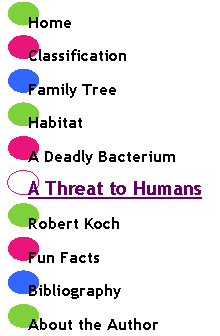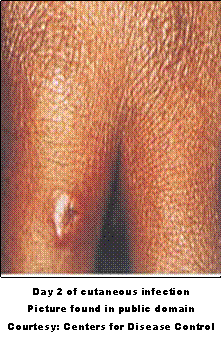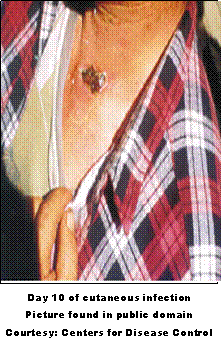|
Human Infections |
|
Humans almost invariably contract anthrax is through contact with infected animals. There are also a few occupations that pose a threat of anthrax contraction, but those careers require vaccinations against the disease. Thus far into research, there have been no documented cases of human-to-human passing of the disease. There are three forms of the disease that can be seen in humans: cutaneous anthrax, inhalational anthrax, and gastrointestinal anthrax.
|
|
Because the rate of human infection is so low, most of the research concerning anthrax today concerns the possibility of use of anthrax in biochemical warfare and because of the possibility of bioterrorist threats. Throughout history, there have been a few cases of human outbreaks caused by infections other than that of ones obtained through contact with infected animals. The only occurrence of bioterrorist attacks in the United States occurred in 2001, when anthrax spores were concealed and sent in pieces of mail. While the attack was meant more as a form of creating fear than as a way to kill a large number of people, it did cause the death of five people out of the twenty-two who were infected. Some obtained cutaneous anthrax, while others still contracted inhalational anthrax. Prior to this attack, there had only been eighteen reported cases of inhalational anthrax in the United States in the past one-hundred years — the most recent in 1976. |



